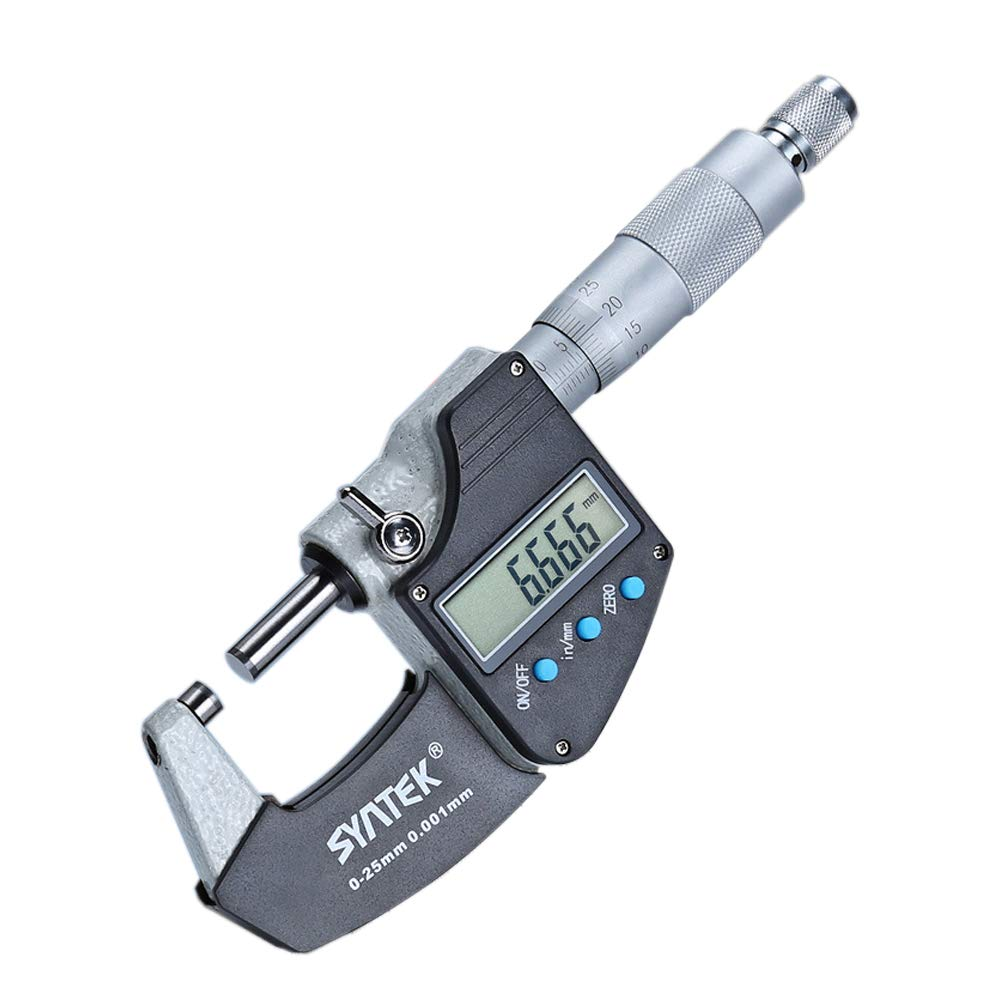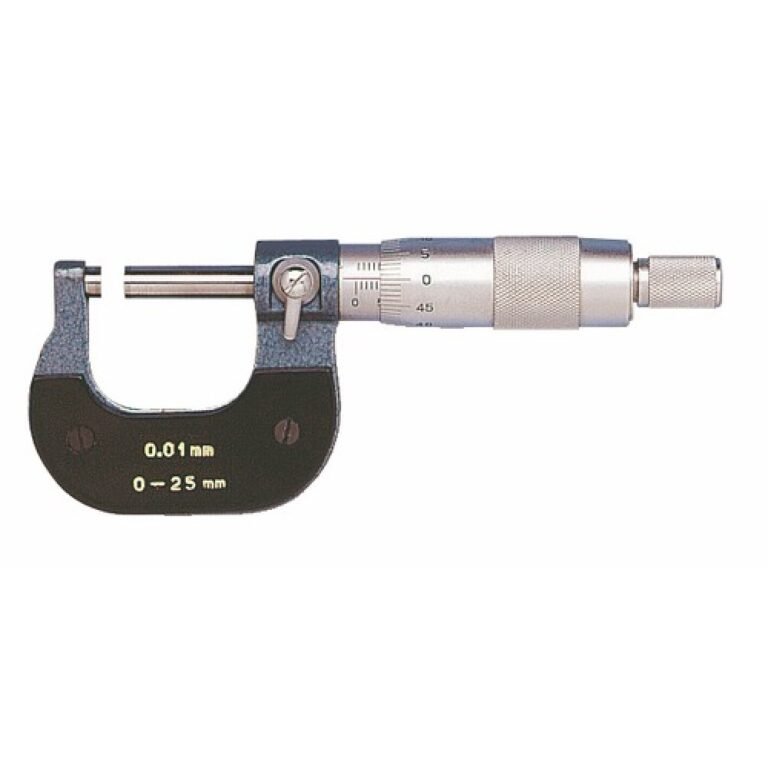The micrometre, often referred to as a micrometer screw gauge, is a precision measuring instrument used to measure small distances with exceptional accuracy. Its ability to measure minute dimensions has revolutionized various fields, from engineering and manufacturing to scientific research.
Understanding the Micrometer
At its core, a micrometer is a simple yet ingenious device. It consists of a:
Frame: A sturdy frame that houses the moving and fixed parts.
Anvil: A fixed, hardened surface against which the object to be measured is placed.
Spindle: A precisely threaded screw that moves linearly when rotated.
Thimble: A rotating sleeve attached to the spindle, graduated with a fine scale.
Barrel: A stationary sleeve with a linear scale.
Ratchet stop: A mechanism that prevents excessive force from being applied, ensuring consistent measurements.
How Does a Micrometre Work?
The principle behind a micrometer’s operation is the conversion of linear motion into rotational motion. When the thimble is rotated, the spindle moves along the frame, bringing the object into contact with the anvil.
The barrel scale provides coarse measurements in millimeters or inches, while the thimble scale offers finer readings in hundredths or thousandths of a millimeter (micrometers). By combining the readings from both scales, the micrometer provides extremely precise measurements.
Types of Micrometres
Micrometers come in various types, each designed for specific applications:
Outside Micrometer: Used to measure the external diameter of objects like shafts, wires, and pipes.
Inside Micrometer: Designed to measure the internal diameter of holes and bores.
Depth Micrometer: Measures the depth of holes, slots, and recesses.
Vernier Micrometer: Offers higher precision than standard micrometers, with a vernier scale for finer readings.
Digital Micrometer: Incorporates electronic components to display the measurement digitally, eliminating the need for manual reading.
Applications of Micrometers
Micrometers find widespread applications in numerous fields:
Manufacturing and Engineering
Precision machining: Measuring the dimensions of machined parts with high accuracy.
Quality control: Ensuring that manufactured components meet strict tolerances.
Tool and die making: Creating and maintaining precise tools and dies.
Sheet metal fabrication: Measuring the thickness of sheet metal.

Scientific Research
Metrology: Conducting precise measurements for scientific experiments.
Materials science: Characterizing the properties of materials.
Microscopy: Calibrating and adjusting microscope stages.
Other Applications
Electronics: Measuring the thickness of wires and components.
Automotive: Checking the dimensions of engine parts.
Woodworking: Measuring the thickness of wood and the depth of cuts.
Using a Micrometer: A Step-by-Step Guide
Clean the Micrometer: Remove any dirt or debris that may interfere with the measurement.
Close the Jaws Gently: Rotate the thimble to bring the anvil and spindle into contact with the object.
Apply Light Pressure: Use the ratchet stop to avoid excessive force, which can damage the micrometer or the object being measured.
Read the Scales: Note the reading on the barrel scale and the thimble scale.
Combine Readings: Add the readings from both scales to obtain the final measurement.
Tips for Accurate Micrometer Use
Proper Handling: Handle the micrometer with care to avoid damage.
Regular Calibration: Calibrate the micrometer periodically to ensure accurate measurements.
Avoid Over-tightening: Use the ratchet stop to prevent excessive force.
Clean the Jaws Regularly: Remove any debris that may affect the measurement.
Proper Storage: Store the micrometer in a safe and clean place to protect it from damage.
Common Micrometer Errors and How to Avoid Them
Parallax Error: This occurs when the reading is taken from an angle, leading to an inaccurate measurement. Avoid this by looking directly at the thimble scale.
Backlash Error: This happens when the spindle moves slightly in the opposite direction before moving forward, causing an inaccurate reading. To minimize this, always approach the measurement from the same direction.
Wear and Tear: Over time, the micrometer’s components may wear down, leading to inaccuracies. Regular calibration and maintenance are essential.
The Future of Micrometry
Advancements in technology are constantly improving the accuracy and functionality of micrometers. Digital micrometers with enhanced features like data logging and statistical analysis are becoming increasingly popular.
Furthermore, research is ongoing in developing even more precise measurement techniques, such as laser interferometry, which can measure distances with sub-nanometer accuracy. These advancements will continue to push the boundaries of micrometry and enable even more precise measurements in various fields.
Final Thoughts
The micrometer, with its simple yet ingenious design, has proven to be an invaluable tool in countless applications. Its ability to measure minute dimensions with exceptional accuracy has revolutionized various fields, from manufacturing and engineering to scientific research.
By understanding the principles of micrometry and following proper usage guidelines, individuals can utilize this versatile instrument effectively to achieve precise and reliable measurements. As technology continues to advance, we can expect even more sophisticated and accurate micrometers to emerge, further expanding the horizons of measurement science.
FAQs
What is a micrometer and how does it work?
A micrometer is a precision measuring instrument used to measure very small distances with high accuracy. It functions by converting rotational motion into linear motion. A precisely threaded screw (spindle) moves linearly when rotated. This rotation, controlled by the thimble (a rotating sleeve attached to the spindle), translates into the linear movement of the spindle, enabling the measurement of minute distances.
How does a micrometer work?
A micrometer operates by converting rotational motion into linear motion. It has a precisely threaded screw (spindle) that moves linearly when rotated. The rotation of the thimble (a rotating sleeve attached to the spindle) is translated into the linear movement of the spindle, allowing for the measurement of minute distances.
What are common errors in micrometer use and how can they be avoided?
Parallax Error: Reading the scale from an angle can lead to inaccurate measurements. Avoid this by looking directly at the thimble scale.
Backlash Error: Spindle movement in the opposite direction before moving forward can cause inaccuracies. To minimize this, always approach the measurement from the same direction.
Wear and Tear: Overuse or improper handling can wear down the micrometer’s components, affecting accuracy. Regular calibration and proper maintenance are crucial.
To read more, Click Here
